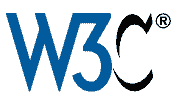Images of Text
Images of text display text that is intended to be read. With the current CSS capabilities in most web browsers, it is good design practice to use actual text that is styled with CSS rather than image-based text presentation. Actual text is much more flexible than images: It can be resized without losing clarity, and background and text colors can be modified to suit users’ reading preferences. Images are more likely to distort and pixelate when resized. In those uncommon situations where images of text must be used, the text alternative must contain the same text presented in the image.
Image of styled text with decorative effect
This following image is used to convey a slogan text with decorative effects. Previously it was not possible to create such text using CSS styling, and that would be rendered consistently across browsers, which is why an image of text approach was selected. The text alternative is the same as that presented in the image: “Your access to the city”. The decorative effects (stylized text and shadow) are not be described because they are not relevant.

<img src="access-city.png" alt="Your access to the city.">
Alternative approach
The visual effects in the above image can be produced using CSS3 and an embedded font. Authors and developers that need to support older browsers may find the image example useful, if a less styled fallback text isn’t an option.
HTML:
<div class="tagline"><span>Your access to the city</span></div>
CSS:
.background { background-color: #FFF; padding: 2em; } .tagline { font-family: 'Harabara Hand', cursive; text-transform: lowercase; color: #226C8E; font-size: 1.5em; letter-spacing: -1px; padding-left: 1em; background-color: #DDD9D6; box-shadow: 0 2px 4px rgba(0,0,0,.5); } .tagline span { display: inline-block; transform: rotate(-10deg); }
Note 1: The code snippet doesn’t show any vendor prefixes. These should be added to increase compatibility with older versions of browsers.
Note 2: The specific @font-face rule was left out intentionally. It’s not important for the example.
Image of text used as an unlinked logo
The following image is the logo for the Web Accessibility Initiative. It’s not part of a link, so the text alternative is “Web Accessibility Initiative”. There’s no need to mention that it is a logo.

<img src="wai.png" alt="Web Accessibility initiative">
Note 1: Images used as logos are exempt from some of the accessibility requirements that apply to other images of text. For example, there are no minimum color contrast and text size requirements.
Note 2: If this logo were linked then it would become a functional image. See Functional Images: Image used alone as a linked logo.
Image of a mathematical expression
This math expression shows how to signify that a number is recurring. The alt text is “0.3333 recurring. (The recurrence is indicated by a line over the ‘3’ in the fourth decimal place)”. In this particular example the way that the recurrence is shown is important, so it is equally described in the text alternative. As with all images, the author is in the best position to determine what information is intended to be conveyed by the image and construct the text alternative accordingly.

<img src="0dot3333recurring.png" alt="0.3333 recurring. (The recurrence is indicated by a line over the ‘3’ in the fourth decimal place)">
MathML
Images of math expressions should only be used in exceptional circumstances – for example, when the expression is an exception to the normal content for the page or website.
If math forms are a substantial part of the page or website content (for example, online maths courses), MathML should be used instead. MathML represents both presentation and content semantically, making it more accessible to a wider range of users. Many assistive technologies can interpret the code.
The simple example above illustrates the difficulty of describing both the content and presentation (the position and location of the over-line representing recurrence) in mathematical expressions succinctly and clearly. For more complex expressions or equations, text alternatives for images are unlikely to provide sufficient detail succinctly. MathML helps provide such semantics within the code rather than as text.
<math> <mstack stackalign="right"> <msline length="1"/> <mn> 0.3333 </mn> </mstack> </math>
Note: The above code includes semantic information that conveys both content and presentation to assistive technologies.
